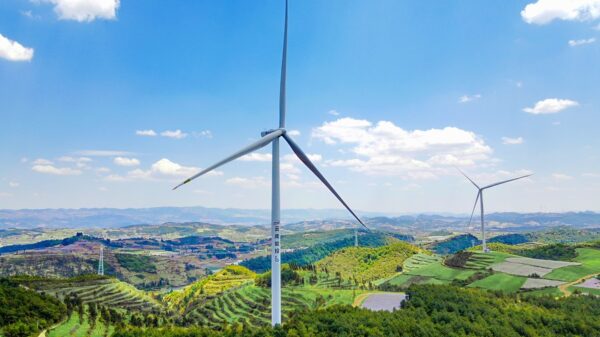MASINGA, August 14 – The Kenya Electricity Generating Company (KenGen) is in the process of expanding the capacity of the Masinga dam by increasing the spillway wall by 1.5 metres to hold an extra 25 percent of water.
KenGen Managing Director, Eddy Njoroge, said this would increase water storage at the spillway to about 2 billion litres at full level from the current 1.6 billion litres.
Addressing journalists on a tour of the dam Wednesday night, Njoroge said this would also create an extra 90 GigaWatt Hours (GWH) of electricity due to an added retention of water when heavy rains occur.
“If it never spills, obviously then we have not gained anything but during spillage time then we would be storing more. We have already got a consultant on site; we are just going to tender for that,” confirmed the KenGen boss.
“It would have been ideal to do it at this time when the water level is low but we reckon we will be able to do it even when the dam is full.”
The project is expected to cost about Sh810 million.
Njoroge said the award of the contracts would be done by year end and the project should be complete by end of 2009.
He said this would be cheaper than constructing a new hydro plant.
Njoroge at the same time expressed concern over the Mau Forest’s destruction but said that the Sondu Miriu power plant was still in operation despite the devastation of the forest.
The commissioning of the power plant by President Mwai Kibaki last month was put off for what was termed as lack of power generation at the plant.
“It was not quite correct that the power plant was not generating. Currently we are able to get 1.3 GWH every evening from there. So it is actually generating according to what we had designed. The total expectation from Sondu Miriu is about 330 GWH per year,” he stated.
He at the same time allayed fears of possible power cuts following the low water levels at the Masinga dam.
Njoroge said the company is expecting that the short rains would be sufficient to increase the water volume.
The current water levels at the dam stand at 1047.5 metres above sea level, as opposed to the required 1056.5 metres above sea level.
“Currently we are generating about 5 GWH per night from here. Previously we used to generate about 7.8 GWH. As you have seen, the dam is quite down.”
“At the spilling level we normally store about 1.6 billion litres of water and currently we have only about 600 million litres of water. I don’t think it is alarming, we are hoping that we can run the way we are running now until about October, when the short rains come.”
He however said that the dam would stop generating electricity if the water volume fell below 1037 metres above sea level, but added that there are about 150 megawatts of emergency if the situation deteriorated.
Njoroge said the company was exploring new ways of creating electricity to meet the rising demand, especially with the ongoing rural electrification project.
He noted that the rural project would increase the demand to about 1500 megawatts by 2012, and double it by 2018.
“That means the company has to increase its production by 2000 megawatts in 10 years,” Njoroge said.
“As to whether KenGen has capacity for that, the answer is yes. Our focus is more on geothermal and that’s why we feel that there is a lot more in terms of natural resource.”
“Although it is quite expensive to put up geothermal plants, we feel that in the long run it is the cheapest option for this country.”
He added that they were also exploring possibilities of using wind energy.
“The problem with wind is that you need to study the regime over a period of 2-3 years because you may have a lot of wind in a place, but only seasonally.”
“Therefore you need to have proper data for you to be able to size the sort of machine that you want to put in and that’s what we have done. And we hope that over the next one year we will have enough data to enable us to start doing some feasibility.”


































